China and the Islamic World: How the New Silk Road is Transforming Global Politics Robert Bianchi
Visit to download the full and correct content document: https://ebookmass.com/product/china-and-the-islamic-world-how-the-new-silk-road-istransforming-global-politics-robert-bianchi/
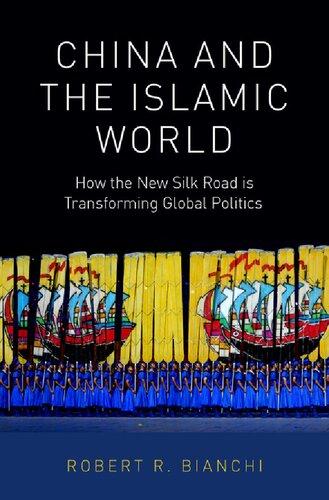
More products digital (pdf, epub, mobi) instant download maybe you interests ...
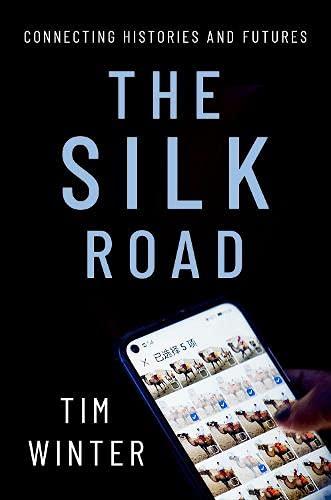
The Silk Road: Connecting Histories and Futures Tim Winter
https://ebookmass.com/product/the-silk-road-connecting-historiesand-futures-tim-winter/
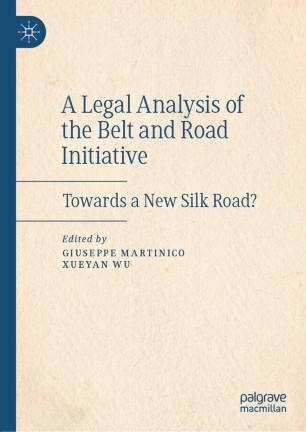
A Legal Analysis of the Belt and Road Initiative: Towards a New Silk Road? 1st ed. Edition Giuseppe Martinico
https://ebookmass.com/product/a-legal-analysis-of-the-belt-androad-initiative-towards-a-new-silk-road-1st-ed-edition-giuseppemartinico/
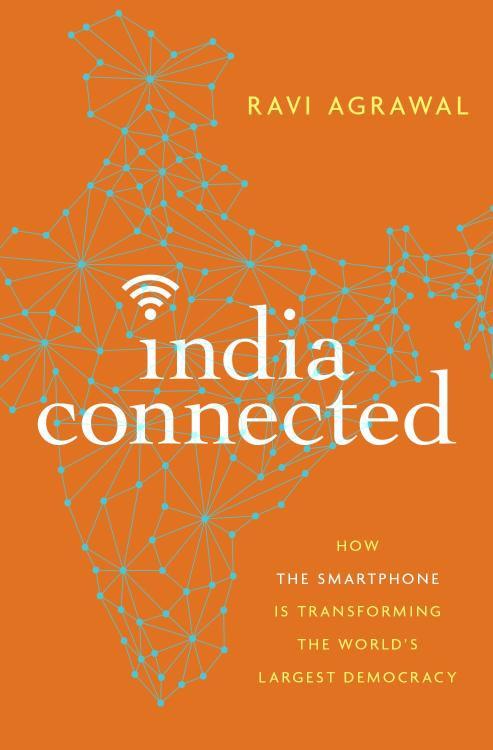
India Connected: How the Smartphone Is Transforming the World's Largest Democracy Ravi Agrawal
https://ebookmass.com/product/india-connected-how-the-smartphoneis-transforming-the-worlds-largest-democracy-ravi-agrawal/

The Fintech Disruption: How Financial Innovation Is Transforming the Banking Industry Thomas Walker
https://ebookmass.com/product/the-fintech-disruption-howfinancial-innovation-is-transforming-the-banking-industry-thomaswalker/

How China Is Reshaping The Global Economy: Development Impacts In Africa And Latin America 1st Edition Rhys Jenkins
https://ebookmass.com/product/how-china-is-reshaping-the-globaleconomy-development-impacts-in-africa-and-latin-america-1stedition-rhys-jenkins/

The Prequel to China's New Silk Road: Preparing the Ground in Central Asia 1st ed. Edition Tilman Pradt
https://ebookmass.com/product/the-prequel-to-chinas-new-silkroad-preparing-the-ground-in-central-asia-1st-ed-edition-tilmanpradt/

Rethinking the Silk Road: China’s Belt and Road Initiative and Emerging Eurasian Relations 1st Edition Maximilian Mayer
https://ebookmass.com/product/rethinking-the-silk-road-chinasbelt-and-road-initiative-and-emerging-eurasian-relations-1stedition-maximilian-mayer/

Culture Paves The New Silk Roads Sophia Kidd
https://ebookmass.com/product/culture-paves-the-new-silk-roadssophia-kidd/

How China Loses: The Pushback against Chinese Global Ambitions Luke Patey
https://ebookmass.com/product/how-china-loses-the-pushbackagainst-chinese-global-ambitions-luke-patey/
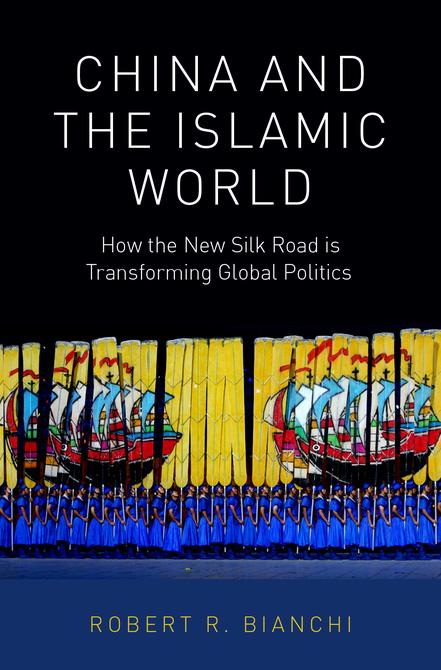
China and the Islamic World
China and the Islamic World
How the New Silk Road Is Transforming
Global Politics
robert r. bianchi
Oxford University Press is a department of the University of Oxford. It furthers the University’s objective of excellence in research, scholarship, and education by publishing worldwide. Oxford is a registered trade mark of Oxford University Press in the UK and certain other countries.
Published in the United States of America by Oxford University Press 198 Madison Avenue, New York, NY 10016, United States of America.
© Oxford University Press 2019
All rights reserved. No part of this publication may be reproduced, stored in a retrieval system, or transmitted, in any form or by any means, without the prior permission in writing of Oxford University Press, or as expressly permitted by law, by license, or under terms agreed with the appropriate reproduction rights organization. Inquiries concerning reproduction outside the scope of the above should be sent to the Rights Department, Oxford University Press, at the address above.
You must not circulate this work in any other form and you must impose this same condition on any acquirer.
Library of Congress Cataloging-in-Publication Data
Names: Bianchi, Robert, 1945- author.
Title: China and the Islamic world : how the new Silk Road is transforming global politics / Robert R. Bianchi.
Description: New York, NY : Oxford University Press, 2019. | Includes bibliographical references and index.
Identifiers: LCCN 2018040398 (print) | LCCN 2018055643 (ebook) | ISBN 9780190915292 (updf) | ISBN 9780190915308 (epub) | ISBN 9780190915285 (hardback) | ISBN 9780190915315 (online content)
Subjects: LCSH: Middle East—Foreign relations—China. | China—Foreign relations—Middle East. | Islamic countries—Foreign relations—China. | China—Foreign relations—Islamic countries. | Middle East—Foreign economic relations—China. | China—Foreign economic relations—Middle East. | Islamic countries—Foreign economic relations—China. | China—Foreign economic relations—Islamic countries. | World politics—21st century. | BISAC: RELIGION / Religion, Politics & State. | RELIGION / Islam / General. Classification: LCC DS63.2.C5 (ebook) | LCC DS63.2.C5 B53 2019 (print) | DDC 327.51017/67—dc23 LC record available at https://lccn.loc.gov/2018040398
9 8 7 6 5 4 3 2 1
Printed by Sheridan Books, Inc., United States of America
For , Mei Li Li who led me to China
CONTENTS
List of Figures ix
List of Tables xi Quotations xiii
Preface xvii
Introduction 1
CHAPTER 1 What Is New about the New Silk Road? 5
CHAPTER 2 Megaregions and Coevolution in World Politics 18
CHAPTER 3 Pakistan: Deep Democracy and Shallow Strategy 29
CHAPTER 4 Turkey: A Competing Partner 49
CHAPTER 5 Indonesia: Inherent Weakness and Increasing Leverage 63
CHAPTER 6 Iran: The Great Divider 80
CHAPTER 7 Nigeria: A Shaky Bridge 97
CHAPTER 8 Egypt: Weighing the Tolls 113
CHAPTER 9 Islam and the Opening of the Chinese Mind 127
CHAPTER 10 Learning Abroad, Evading at Home 139
CHAPTER 11 The Bitter and the Sweet 150
Notes 159
Selected Bibliography 215 Index 277
LIST OF FIGURES
3.1 The Western Route through Balochistan and Khyber Pakhtunkhwa 31
3.2 The Punjabi Route as the New Main Artery 32
3.3 The Evolution of China-Pakistan Exchanges 35
3.4 The Triple Branches Network and Early Harvest Projects 36
3.5 Pakistan Links Maritime and Overland Sections of the New Silk Road 42
3.6 Xinjiang’s Triple Junctions and the Straits of Malacca 43
3.7 Pakistan’s Trade with China, 1995–2015 45
3.8 Cumulative Chinese Investment in Pakistan, 2005–2016 45
4.1 Results of the Turkish Constitutional Referendum April 16, 2017 by Region and Province (Percent Voting “Yes”) 57
4.2 Provincial Distribution of Votes in the Turkish Constitutional Referendum, 2017 58
4.3 Turkey’s Trade with China, 1995–2015 60
4.4 Cumulative Chinese Investment in Turkey, 2005–2016 60
5.1 Results of the Jakarta Gubernatorial Elections by District (Kecamatan), Round 1 February 15, 2017, and Round 2 April 19, 2017 68
5.2 Votes for Jakarta Governor by District (Kecamatan), Rounds 1 and 2 70
5.3 Cumulative Chinese Investment in Indonesia, 2005–2016 77
5.4 Indonesia’s Trade with China, 1995–2015 78
6.1 Iran’s Trade with China, 1995–2015 89
6.2 Cumulative Chinese Investment in Iran, 2005–2016 90
6.3 Major Rail Connections across Iran 91
6.4 Linguistic and Religious Diversity in Iran 92
6.5 Geographic Distribution of Votes for Hassan Rouhani and Opponents in Presidential Elections of 2013 and 2017 94
7.1 Nigeria’s Total Exports, 1990–2015 105
7.2 Nigeria’s Trade with China, 1995–2015 105
7.3 Cumulative Chinese Investment in Nigeria, 2005–2016 106
7.4 Nigerian Presidential Votes by State, 2011 and 2015 108
7.5 Nigerian Railway Routes 110
8.1 Egypt’s Trade with China, 1995–2015 123
8.2 Cumulative Chinese Investment in Egypt, 2005–2016 124
LIST OF TABLES
3.1 Early Steps toward Disclosing CPEC Finances and Local Benefits 37
3.2 Further Disclosures of CPEC Project Details 39
3.3 China’s Largest Investments in Pakistan, 2005–2016, Projects Worth
$1 Billion or More 46
4.1 China’s Largest Investments in Turkey, 2005–2016, Projects Worth $1 Billion or More 61
5.1 Results of the Jakarta Gubernatorial Elections by District (Kabupaten), Round 1 February 15, 2017, and Round 2 April 19, 2017 67
5.2 Results of the Jakarta Gubernatorial Elections by District (Kecamatan), Round 1 February 15, 2017, and Round 2 April 19, 2017 71
5.3 China’s Largest Investments in Indonesia, 2005–2016, Projects Worth $1 Billion or More 78
6.1 China’s Largest Investments in Iran, 2005–2016, Projects Worth $1 Billion or More 90
6.2 Vote for Hassan Rouhani in Iran’s Presidential Elections of 2013 and 2017 by Province 93
7.1 China’s Largest Investments in Nigeria, 2005–2016, Projects Worth
$1 Billion or More 106
7.2 Nigerian Statewide Vote for President, 2011 and 2015 109
8.1 China’s Largest Investments in Egypt, 2005–2016, Projects Worth $1 Billion or More 124
10.1 Hong Kong Legislative Council Election Results by Geographic and Functional Constituencies, September 4, 2016 142
10.2 Functional Constituencies Represented in the Hong Kong Legislative Council, 30 Seats 144
QUOTATIONS
“We are heirs to two Silk Roads: not the ancient and the modern, but the invented and the reinvented.”
—tamara chin, “The Invention of the Silk Road, 1877,” Critical Inquiry, Autumn 2013, p. 194.
“Marco Polo describes a bridge, stone by stone. ‘But which is the stone that supports the bridge?’ Kublai Khan asks. ‘The bridge is not supported by one stone or another,’ Marco answers, ‘but by the line of the arch that they form.’
Kublai Khan remains silent, reflecting. Then he adds: ‘Why do you speak to me of the stones? It is only the arch that matters to me.’
Polo answers: ‘Without stones there is no arch.’ ”
—italo calvino, Invisible Cities, translated by William Weaver, London: Vintage Books, [1972] 1997, Chapter 5, p. 74.
“ . . . [W]anting to understand Southeast Asia without integrating a good deal of southern China into our thinking is like wanting to give an account of the Mediterranean world after removing Turkey, the Levant, Palestine, and Egypt.”
—denys lombard, “Another ‘Mediterranean’ in Southeast Asia,” translated by Nola Cooke, The Asia-Pacific Journal, March 1, 2007 (original in 1998).
“Conventional views of how the modern world has been forged do not prepare us to identify patterns of diversity that have existed in the past and present within world regions, patterns that are not simply miniature
versions of global variations . . . Large world regions form an alternative to the local and global that strike so many Anglo-American analysts as crucial.”
—roy bin wong, “East Asia as a World Region in the 21st Century,” Nihon Kezai Shimbun, August 13, 2004.
“Just as Latin Christianity and Turkish Islam shared a Mediterranean where Jews and northern Europeans also traded, so was China’s northwestern frontier inhabited by people of diverse cultures: Tibetan, Mongolian, Han Chinese, and Sino-Muslims. The two regions were also connected across vast expanses by the flow of merchants who travelled long distances.”
—roy bin wong, “Entre monde e nation: les régions braudéliennes en Asie,” Annales, 2001, p. 19, translated by the author.
“From the beginnings of the Eurasian and African world-system, China played a crucial role. Every period of growth in the world-system followed China’s phases of unification and its economic rises, with the Chinese momentum spreading like a wave from east to west, reaching the West with some delay . . . Conversely, each Chinese recession initiated a downward trend in the system and/or its restructuring.”
—philippe beaujard, “The Indian Ocean in Eurasian and African World-Systems before the Sixteenth Century,” Journal of World History, December 2005, p. 424.
“[T]he entire Afro-Eurasian landmass has been linked by complex networks of exchange since at least the Bronze Age . . . Afro-Eurasia has a common history despite the ecological and cultural variety of its many different regions . . . [T]he Silk Roads played a fundamental role in creating and sustaining the unity of Afro-Eurasian history.”
—david christian, “Silk Roads or Steppe Roads?
The Silk Roads in World History,” Journal of World History, Spring 2000, pp. 1–2.
“[I]t may be a profound mistake to focus primarily . . . on the various component regions or ‘civilizations’ of Eurasia. Instead, to understand the history of each of these parts, it is necessary to see that there is, underlying them, a single Afro-Eurasian history, which is distinct from the history of other major world zones . . . For Afro-Eurasian societies
shared many important things as a result of the exchanges that occurred along the Silk Roads.”
—david christian, “Silk Roads or Steppe Roads?
The Silk Roads in World History,” Journal of World History, January 2000, p. 18.
“The rise of modernity itself can best be seen as a product of the rich economic and technological synergy generated over several millennia between different parts of Eurasia, rather than as a product of the peculiarities of any particular regional culture or ‘civilization.’ ”
—david christian, “Silk Roads or Steppe Roads?
The Silk Roads in World History,” Journal of World History, January 2000, p. 21.
My travels in China really began in Mecca, but more by chance than design. When I made the Hajj in 1989, I had no inkling that the path would lead to Nanjing, Shanghai, Xinjiang, Yunnan, and Hong Kong. The first spark came with the sight of so many pilgrims from Southeast Asia— particularly Indonesia, Malaysia, and Singapore—who seemed so out of place in the Arabian desert.
The common thread between them was a flair for group organization. They had a confidence and direction that stood out amid the confusion of most Arab, African, and South Asian pilgrims who kept bumping into one another and pushing against the flow, creating bottlenecks that put everyone in danger. The Indonesians were instantly identifiable by the bright batik suits that signaled their hometowns and districts. Malaysians wore coordinated shirts and dresses with their national flag stitched on the back. Most of them had paid for the Hajj with installments years in advance as though mortgaging a second home they would only visit far in the future. But it was the Singaporeans, especially the tiny young women, who caught everyone’s eye—always springing up by the dozen with arms locked so tightly they could slice through the thickest crowd and vanish before anyone figured out who they were.
Once I grasped East Asia’s growing power in the Islamic world, it was natural to visit these countries when doing fieldwork for my study of Hajj and politics. That was when I first encountered the profound overlap and interpenetration of Islamic and Chinese civilizations that has intrigued me ever since. In 1996, while traveling through the neighborhoods of Singapore, the states of Malaysia, and the islands of Indonesia, I saw that every community
was a hybrid, combining Muslim and Chinese elements in countless ways on every level.
My visit coincided with the simultaneous celebrations of Ramadan and the Chinese lunar New Year. Adherents of both traditions were eager to display their connections and rivalries with special intensity. All of the conventional boundaries and dichotomies blurred and faded together—only to re-emerge around the corner or down the road where they jostled for a different balance. Race, language, cuisine, dress, architecture, music, children’s games, crafts, boat designs, farming patterns—all were so similar across religious communities it was hard to know what was Islamic and what was Chinese, what was indigenous and what was imported.
In Kuala Lumpur’s side streets, political candidates gave stump speeches in four languages—Hokkien Chinese, Malay, English, and Mandarin. In Singapore shopping malls, the first performances of the Beijing Opera met with suspicion from older Chinese locals who were perplexed by both the language and the political implications. Meanwhile, Malay and Indian Singaporeans joined the delighted tourists in waves of applause. Downtown Jakarta was buzzing with gossip about the Suharto family’s recent Hajj, including the Chinese Muslim timber baron, Bob Hasan, who tagged along and appeared everywhere in the official photos. Although Suharto was trying to send a message of personal piety and interracial brotherhood, it was clear that the effort had miscarried. The city’s poor viewed the Hasan connection as simple cronyism and it stoked their resentment of Chinese privilege regardless of religion—resentment that soon erupted in the anti-Chinese riots that accompanied Suharto’s overthrow.
These post-Hajj journeys to Southeast Asia convinced me that I had to start learning Chinese if I wanted to explore the multicultural worlds I was discovering. That decision eventually led me to Nanjing, where my wife and I lived and traveled for three years (2006–2009) while I was helping to create a graduate program in international law at the Johns Hopkins-Nanjing University Center for Chinese and American Studies. The following year, I visited Qatar University where I taught Islamic studies and international politics to young women from the Persian Gulf countries and Africa. Then, we moved to Singapore—my original gateway to East Asia—for three more years (2011–2014) to help launch a Middle East Research Institute at the National University of Singapore. Soon thereafter, we returned to China, hosted by the Shanghai International Studies University, for a Fulbright year of research and lecturing across mainland China, Hong Kong, and Taiwan (2015–2016).
It was during these busy years that I gained the materials, language skills, friendships, and experiences that made this book possible. A wide network of generous and distinguished scholars—Asian, Middle Eastern, Western, and Afro-Eurasian—guided me in tracing China’s long encounters with Islam in many eras and disciplines. Conference organizers and editors in several countries have given me invaluable opportunities to develop, debate, and refine my thinking. I am deeply grateful to all of these colleagues for their encouragement and kindness.
Some of my informants and friends would prefer not to be mentioned by name, but there are many I can thank openly. In Nanjing, Hua Tao and Robert Daly were superb guides to Chinese history and diplomacy. Ma Shuang Shuang and a number of Nan Da graduate students patiently helped me improve my speaking and reading skills in Chinese. The Tang poems and tongue-twisters they taught me have become a permanent part of my dream life. In Doha, I enjoyed the hospitality of Amira Sonbol and Ahmad Ibrahim and the freewheeling debates that my students unleashed at every meeting.
Singapore exposed me to a rich collection of international experts in multiple disciplines. The Asia Research Institute was a constant source of stimulation thanks to Prasenjit Duara, Arun Bala, and Michael Feener who allowed me to join dozens of seminars and workshops blending Asian civilizations, comparative religion, and social science. I would also like to thank Chen Weitseng and Juliette Duara of the Law School; Wang Gungwu, Guo Liangping, and Qian Jiwei at the East Asian Institute; and Lilia Labidi and Ali Kadri from the Middle East Institute.
During my Fulbright research year in China, I was fortunate to be the guest of the Middle East Studies Institute of the Shanghai International Studies University where I met many of China’s top scholars and diplomats specializing in Middle Eastern affairs. Several other universities and research centers invited me for lectures and conferences, including Nanjing Normal University, Fudan University, Tongji University, Sichuan University, The Ocean University of China, Ningxia University, the Shenzhen Municipal Government, the Shanghai Institute of American Studies, and the Hopkins China Forum. In every case, scholars were eager to share their writings and viewpoints, influencing my thinking on countless issues long after we parted company.
A number of scholars in Europe and the Middle East invited me to present the early findings of my research in international conferences and seminars. I am most grateful to the Sudairy Foundation in Al-Ghat, Saudi Arabia; the National Museum of Ethnology in Leiden, Netherlands; Goethe
University in Frankfurt, Germany; the French Cultural Center and CEDEJ in Cairo, Egypt; and the University of Nottingham in the United Kingdom. In the United States, I owe a special debt to Marvin Weinbaum, Marvin Zonis, Engseng Ho, Robert Lee, David Blears, and Miriam Pollack who read and criticized much of the draft manuscript, and to Jefferson Gray who provided a steady flow of helpful information and commentary that broadened my vision in many ways. Most of all, I relied on the support and companionship of my wife, Vicki Mayfield, who shared nearly every step of these travels with keen cross-cultural instincts that magnified my fun and knowledge beyond measure.
Introduction
america’s attention is riveted on China and Islam—and in both cases the dominant emotion is fear. Some of this is fear of the unknown, but much of it stems from the half-truths and distortions we have created in our minds and media, particularly about the China Threat and Islamic Terrorism. A powerful segment of American policymakers and scholars is urging the country to prepare for supposedly inevitable wars with Chinese and Muslim enemies or to admit that the battles have already begun despite denials on all sides. Predictions of conflict usually rest on faulty assumptions about China’s relentless drive for international dominance, Islam’s inherent belligerence, and history’s verdict that major shifts in the balance of power trigger disastrous military responses.1
Exaggerating imagined threats from presumed adversaries creates its own dangers. If America’s leaders focus on shoring up an old hegemony or fending off a new one, they might neglect the skills of statecraft and political learning that increasingly outweigh the value of military force in the contemporary world. They are likely to overlook important opportunities for diplomacy and cooperation in a multipolar community where many countries can contribute resources to overlapping alliances and shifting coalitions. In fact, China and the Islamic world stand out as two of the most influential actors in the emerging international order—powerful partners that every nation can respect and confident civilizations that no foe can expect to subdue. Moreover, Chinese and Muslim societies are moving closer together than ever before. The New Silk Road initiative reaches every corner of the Islamic world as it ties Asia, Africa, and the Indian Ocean into a hemispheric market with Europe and the Western Pacific.
Although China is taking the lead in promoting the rise of Afro-Eurasia, no country can dominate such a vast collection of megaregions or control their fiercely independent members. China has no choice but to compromise with a wide array of contentious partners pursuing their own ambitions and responding to domestic pressures that grow more organized and self-assured every day. Some critics of the New Silk Road describe it as a Chinese exercise in neocolonialism, but it seems more accurate to view the emerging webs of relations as a coevolution of multiple megaregions in the making. China’s leverage is likely to vary widely from place to place and over time. In addition, Chinese society is increasingly susceptible to developments abroad—not just in neighboring countries, but everywhere Chinese businesses and migrants are present. In many matters—particularly ethnic and religious relations, environmental practices, and labor policies—outsiders are influencing attitudes in China at least as much as the Chinese are affecting people along the New Silk Road.
The international relations of Afro-Eurasia are not moving toward a new hierarchy or toward the globalization of an imaginary Chinese tribute system. Instead, we see a number of overlapping networks being shaped by competing governments and organized interest groups with no predetermined endpoint. In each country and region, the distribution of power and resources is under constant scrutiny and subject to endless bargaining. This fluidity and unpredictability is especially notable in most of the Islamic countries that China is courting, and the reverberations inevitably extend into Chinese society as well, shaping debates between elite factions and in public opinion.
In one country after another, China’s leaders are learning to adapt to these changes with flexible statecraft—by showing more effective negotiating skills and by listening more attentively to popular viewpoints beyond privileged government and business circles. But their learning is highly uneven, and it virtually disappears in dealings with their own citizenry. As Chinese politicians become more willing to fashion networks and reciprocity on the New Silk Road, they seem increasingly determined to buttress hierarchy and dictate at home. The contradiction is becoming more evident to Chinese people of all backgrounds and that makes it much harder to sustain indefinitely.
The interplay and abiding tension between centralizing state hierarchies and decentralized social networks is a shared theme in Chinese and Islamic history. Ira Lapidus, the noted student of medieval Islam, argued that political hierarchy was a more common pattern in China compared to the extensive networking of nonstate actors that typified Muslim societies. But he stressed that both civilizations developed sophisticated blends of hierarchy
and networking that were negotiated rather than imposed and that constantly adapted to shifting domestic circumstances and international challenges.2 Joseph Fletcher, the Qing dynasty historian of Islamic Inner Asia, reached similar conclusions. In addition, Fletcher also highlighted the constant give and take between China and its Muslim neighbors, including many pacts and quasi-alliances that regularly strengthened or reduced the relative power of rulers in both civilizations.3
Taken together, the insights of Lapidus and Fletcher provide comparative and historical perspective for understanding the coevolution of Islamic and Chinese societies. The New Silk Road initiatives are writing a new chapter of that story, and no one can predict its trajectory or conclusion. Nonetheless, two matters seem clear already. The citizens of Muslim countries will reject any appearance of tutelage from China just as vigorously as they resisted earlier efforts of domination by the United States, Europe, Russia, and Japan. In addition, China’s leaders will have to fashion a patchwork of loose and pragmatic arrangements with foreign partners in all directions. An expansive imperial or tributary system is beyond Beijing’s capabilities. Indeed, part of China’s appeal in the non-Western world is that many people see it not as a superpower, but as another developing country that remains highly vulnerable to external disruptions and domestic divisions. It is precisely because China seems so overextended economically and so limited militarily that weaker nations regard it as a pliant and manageable partner.
China and the United States suffer from a common shortsightedness. Intensely preoccupied with one another’s intentions and maneuvers, they easily neglect their mutual need to share power with many other nations, particularly the rising societies of the Islamic world. The largest and most ambitious Muslim countries are well aware of their importance in world politics and determined to maximize their leverage regardless of which Great Powers compete for the leading role on an increasingly fragmented global stage. The more the New Silk Road succeeds in fostering an integrated Afro-Eurasian community, the more it will enhance the power of the critical societies that control the lands and seas connecting the Atlantic and Pacific shores.
These regions are the heartlands of the Islamic world—Southeast Asia, South Asia, Central Asia, the Caucasus, the Middle East, and every coast of Africa. China’s bid for world leadership is strengthening Muslim nations’ interconnections with one another, with the global economy, and with the rapidly changing transnational political order. The most successful Islamic countries will become indispensable partners in the emerging megaregions
that span Afro-Eurasia—and that will make them, individually and collectively, more formidable bargainers in all efforts toward global governance.
For all of these reasons, the New Silk Road should encourage America to overcome its exaggerated fears of both China and Islam. No one will dominate the sprawling networks of a transcontinental and transoceanic community— not the United States or China or any coalition they try to assemble. On the other hand, everyone will be more vulnerable to disruptions in the extended channels of commerce and migration. Proxy wars and resource wars will become more costly; vassals and satellites will be harder to find and impossible to control. The coevolution of mutually dependent megaregions will require collective management that is more similar to governing a global commons than to pressing claims of sovereignty and exclusivity. Insuring open access to transportation corridors and natural resources will be more important than asserting unilateral control. Preserving common resources for future generations will require moderating demands to consume them and popular pressures will push ruling elites to share more of the profits not merely with one another, but with their citizens as well.
In these circumstances, the United States and its allies might conclude that they will be the greatest victims of efforts to stigmatize or attack either China or its new friends in the largest Muslim nations. The societies that today seem to be America’s worst adversaries could instead prove to be its most effective partners in fashioning a safer and fairer world.
What Is New about the New Silk Road?
china’s leaders are gambling that they can transform the world without turning their own society upside down in the process. Even if they win the first part of the wager, they are certain to lose the second. Running away from the risks of political reform at home, they have embarked on an audacious project of hemispheric integration that is generating social conflict and political turmoil in every country they touch. The effects are already creating multiple backlashes in China itself where chain reaction grievances are undermining the monopoly of power that the party-state factions so dearly want to preserve.
Hemispheric Scope and Global Impacts
China’s version of the New Silk Road is far more than a revival of the many historical routes we usually describe with that metaphor. It encompasses all of those crossroads as well as far-flung areas they never reached—not merely the Eurasian heartland and the Indian Ocean, but also the Arctic Circle, all of Africa, and even the Americas via both Pacific and Atlantic shores.1
China’s New Silk Road reverberates far beyond its current projects in the key nations of the Islamic world. It generates immediate consequences that radiate both globally and within China itself. Overlapping and interconnected megaregions are taking shape across the Old World, the New World, and the seas that increasingly link them more than they separate them. The scope of these networks is not merely transcontinental and transoceanic, it is hemispheric and inter-hemispheric.2
Students of geopolitics are accustomed to Great Powers promoting rival visions of Eurasian integration. But the Chinese venture is far more than a replay of the Great Games.3 It is old-style geopolitics combined with what Chinese writers commonly refer to as geoeconomics4 and geo-religion5—a coordinated campaign of commercial and cultural outreach that magnifies political influence without relying primarily on military strength. This is a rich set of resources that packs greater potential to reshape world affairs than the phrase “soft power” would suggest.6
The constant interplay of economic, cultural, and military strength is a key element of Chinese statecraft. For example, China’s dominance of maritime commerce creates the need for a blue water navy to protect its carriers and shipping lanes.7 Every navy, in turn, requires ports and bases in distant lands to support its permanent patrols. Naval missions might begin with quasi-military goals such as antipiracy and humanitarian assistance, but they easily blossom into full-blown armadas that can carry expeditionary forces in all directions.8 Beijing has made the military implications of the New Silk Road more explicit than ever by tying it to China’s expanding space program. Countries that partner in Silk Road projects will receive priority access to China’s Beidou telecommunications satellites, including their advanced navigation capabilities that rival and often surpass Western-dominated GPS networks.9
China’s digital Silk Road in outer space parallels the e-commerce ventures of Alibaba and JD.com to build a world trade platform of online shopping and payment services. With a chain of new warehouses and banks along the emerging transport and communications lines, Chinese merchants also plan to promote yuan-denominated transactions in line with Beijing’s efforts to globalize its currency.10 All of these space-based and cyber activities dovetail with China’s so-called parallel system of international institutions that many see as rivals to the Bretton-Woods and North Atlantic structures led by the United States. Washington and Brussels have had little success in discouraging the growth of the Asian Infrastructure Investment Bank, the BRICS New Development Bank, the Silk Road Fund, and the Shanghai Cooperation Organization. Even the World Bank and the Asian Development Bank have begun to seek joint ventures with these China-backed groups instead of treating them as hostile competitors.11
